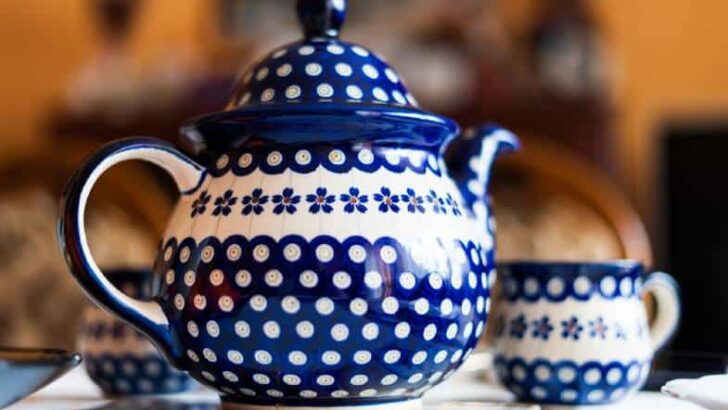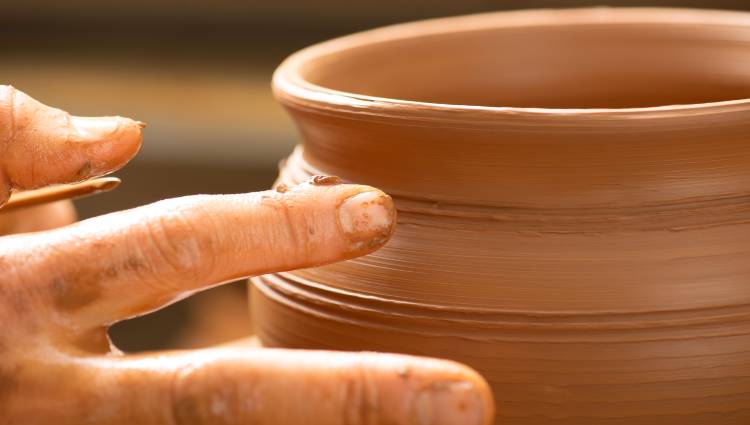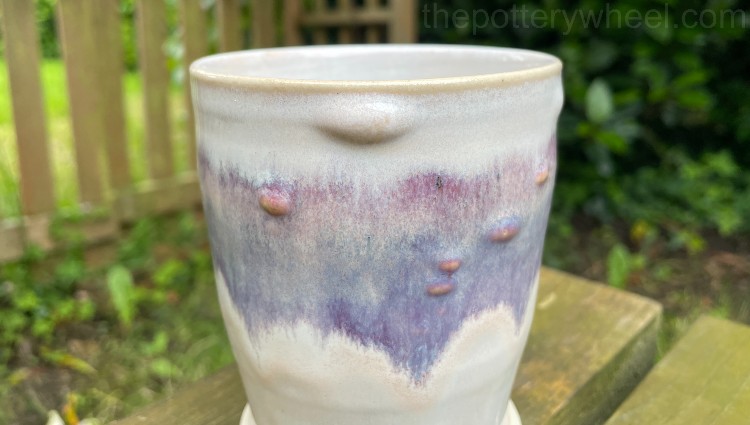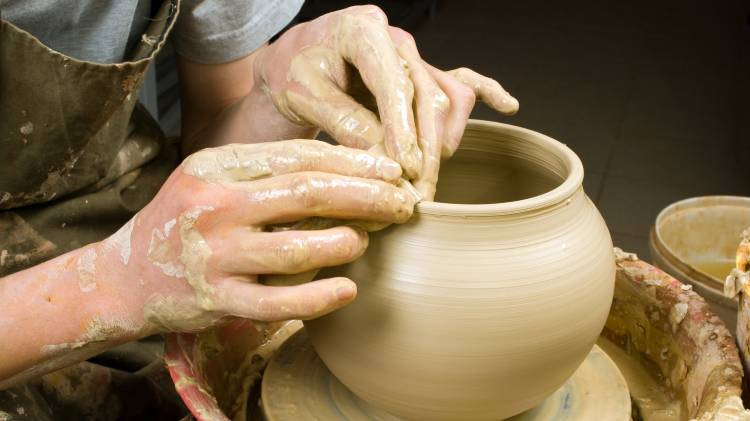Also known as Boleslawiec pottery, Polish pottery is among the finest and most valuable types of pottery. It originates from a Polish village called Boleslawiec, hence the name. If you are an aspiring pottery enthusiast or collector, you probably want to know how to identify polish pottery. Luckily for you, it is quite easy to spot a piece of Polish pottery. This article will highlight what you should look out for to establish that a piece is, indeed, Boleslawiec pottery.
An Overview of Polish Pottery
One of the unique aspects of Polish pottery is that it is handmade from start to finish. As a result, no one piece looks exactly like the other. The finished product reflects the style and skill of an individual artist.
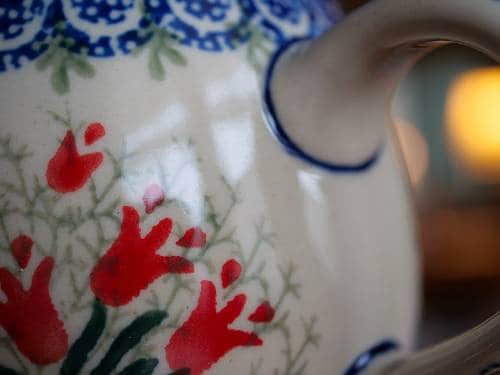
(CC BY-NC 2.0)
In most instances, the craft designer is not the one who creates it. The decorator may also be a different artist. So, a piece is often a product of the synergy of two or three craftspeople.
Only on rare occasions is one artist responsible for the whole process, and these artists tend to be extremely experienced and skilled. These pieces, labeled as UNIKAT, are relatively more intricately made and, thus, more valuable.
While polish pottery is an old craft, many factories still produce it presently. Each factory has its own style and technique of making the craft such that an experienced eye can tell the factory of origin by examining a piece.
The best Polish pottery factory is easily Ceramika Artystyczna (CA). It is known for its excellent quality and superior style. Other factories that make Polish pottery are Vena, Andy, Kalich, and Galia.
How to Identify Polish Pottery
Here are some of the key ways to identify Polish pottery.
1) Color
Color is one factor that distinguishes Polish pottery from other types of craft. Essentially, the pieces are marked by blue polka dot patterns on a cream-white background. The background is white because the pottery is made from local stoneware clay that fires white.
The artists use colors that have particular significance in Polish custom. Blue is the most preferred color because it is considered the color of royalty. Other colors that are used are green, yellow, brown, red, and purple. It is all subject to the taste of a particular artisan.
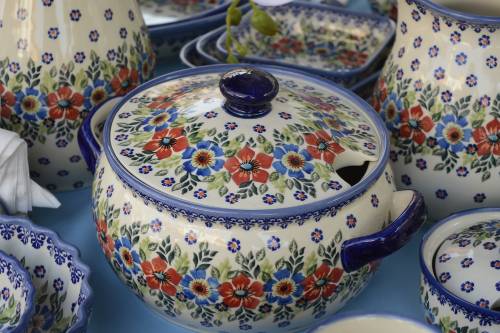
2) Markings
One of the surest ways of recognizing Polish pottery is the markings. All genuine pieces are marked “Hand made in Poland” at the bottom. So, if the color is not convincing enough, just flip the piece and look for the mark on the underside.
Additionally, the pieces have distinct stampings or signatures at the bottom. These markings represent the artists responsible for the pieces or the piece number. For instance, pieces made in Ceramika arsystyczna bear the name “arsystyczna” followed by a universal pattern number developed by the factory.
Some pieces of polish pottery are marked UNIKAT at the bottom. This mark shows that the piece is intricately made by a very skilled artisan. Often, the mark is accompanied by the maker’s initials or signature. These pieces are rare and highly-priced because of the amount of time and skill invested in them.
Also, all Boleslawiec pottery is stamped with stickers that give a ‘gatunek’ rating, abbreviated as “Gat.” rating. Gatunek represents the quality category, and there are five levels: gat 1 to gat 5. The best quality pieces are labeled gat 1, and the least, gat 5.
For an in-depth look at the markings on Boleslawiec pottery, check out my article on that topic right here. And, If you’d like to know more about how to identify pottery without markings, you can take a look at this article addressing that question here.
3) Patterns
Pieces of Polish pottery are known for their beautiful hand finishes with decorative patterns. As aforementioned in the article, all pottery is hand-painted, so the patterns are personalized as per the artist. This is to say that every piece has a unique pattern design.
Even so, there is a common theme in the patterns used to decorate Polish pottery. For one, artists use the same technique to paint the pieces: the punch technique. This style involves applying motifs soaked in paint on the surface of the pottery. The motifs, applied in different shapes and sizes, produce different patterns.
The male peacock is a major inspiration for the decorative patterns used in Polish pottery. The bird is seen as a symbol of wealth and royalty in Polish circles. The peacock eye, also known as Pfaunauge, is a common pattern in many pieces. Other popular patterns applied to Polish pottery include dots, speckles, and abstract florals.
Traditional Vs. UNIKAT Polish Pottery
The CA (Ceramika Artystyczna) divides Polish pottery into two main categories: traditional and UNIKAT. It is possible to tell the two apart based on the pattern and markings at the bottom of the vessels.
Traditional pottery can be distinguished by traditional decoration, which is mainly inspired by the colors of a peacock’s feather. Patterns on UNIKAT pottery are more unpredictable and intricate.
Nevertheless, markings are the surest way to distinguish between traditional pottery and UNIKAT pieces. The latter are marked “UNIKAT” at the bottom, followed by the name or initials of the artist.
On the other hand, traditional pottery is stamped with the piece’s pattern number. It also has the initials of the artist who painted the piece and the signature of the artist who designed the piece. Unlike UNIKAT pieces, traditional pieces are products of the expertise of multiple artisans.
If you want to know more about traditional Polish pottery, you can take a look at my article on that subject here.
Can You Identify Fake Polish Pottery?
Authentic Boleslawiec pottery has the words “Hand made in Poland” stamped on the bottom of the piece. They also include the details of the artisan behind the handmade piece, such as the signature, initials, or “UNIKAT” if the piece is a unique one.
If a piece of pottery suspected to be Boleslawiec lacks the stamp, or the stamp is unclear, then it is likely to be fake. Furthermore, genuine pieces of Polish pottery have stickers that signify the level of quality. The stickers come in different colors to signify different levels of quality.
Final Thoughts
Telling one type of pottery from another is a skill that often requires a certain level of expertise and experience. However, if you are a pottery novice who wants to tell Polish apart, it will not be difficult. Factors that set Boleslawiec pottery apart include its color, patterns, and markings.
Polish pottery is heavily peacock-themed in its patterns and colors. So, if you spot a piece with the pattern of a peacock eye or peacock feathers, then it is likely to be Polish pottery. Similarly, if the patterns are blue on a cream-white background, it is likely to be Polish pottery. One of the biggest marks of Polish pottery is the stamp “Hand made in Poland” at the bottom of the vessel.

